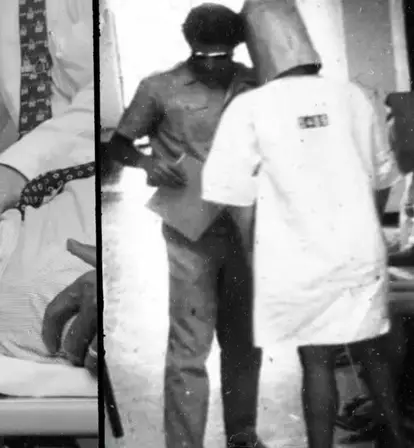From the Little Albert Experiment that terrorized a helpless infant to the Monster Study that tried to turn non-stuttering children into stutterers, these are some of the most disturbing psychology experiments ever performed on humans.
Psychology is a relatively new scientific field. While inquiries into the workings of the human mind technically trace back to the ancient Greeks, psychology did not officially become a field of academic and scientific study until the 1800s, with many citing Wilhelm Wundt’s 1873 book, Principles of Physiological Psychology and his subsequent founding of the first psychology lab in 1879 as the modern origin of the field.
Wundt primarily focused on the study of human consciousness, and he applied several experimental methods to move his research forward. The German professor’s work was very much “of the time” and can be viewed as unscientific by today’s standards, but his influence on the field is undeniable.
Over a century after Wundt opened his psychology lab, the field of psychology has grown exponentially, and researchers have gained a far deeper understanding of the human mind and human behavior. However, there have been some serious missteps along the way.
The American Psychological Association (APA) didn’t establish its first Code of Ethics until 1953. Before that, human psychology experiments had far more potential risk. The original guidelines have, of course, been adapted and added to over the past 70 years as well — and for good reason.
Below, you’ll find seven examples of disturbing and highly unethical psychology experiments conducted on human subjects.
Disturbing Psychology Experiments: The Little Albert Experiment (1920)

YouTubePsychologist John Watson wearing a Santa Claus mask and scaring “Little Albert.”
Ivan Pavlov’s experiments into classical conditioning are perhaps the most famous psychology experiments of all time. The Russian psychologist found that he could condition dogs to drool when they heard a dinner bell ring — even if there was no dinner in front of them — by creating an association in their minds between the bell being rung and dinner being served.
About 20 years later, in 1920, Johns Hopkins University researchers John Watson and Rosalie Rayner sought to prove that classical conditioning could work on humans just as effectively as it had on Pavlov’s dogs.
Their tests are now known as the Little Albert Experiment.
Throughout the course of the study, Watson and Rayner presented a nine-month-old baby, whom they called “Little Albert,” with several fluffy animals like a rabbit and a white rat. At first, the infant showed no negative reaction to any of the animals and even tried to pet them.
But then, when he was presented with one of the animals again, the researchers would strike a hammer against a steel pipe. The sudden and loud noise scared the baby, and he would start to cry.
Eventually, Albert came to fear anything that resembled the fluffy animals, including his family’s dogs and a bearded Santa Claus mask. His mother, who realized how traumatized he was, pulled him from the study before Watson and Rayner could attempt to reverse the conditioning.
The study is controversial for several reasons. First, creating a fear response is a form of psychological harm that is prohibited in modern experiments — and it was heavily critiqued at the time, as well. Second, the study only had one subject, which effectively rendered it pointless as studies of this nature need a much larger sample size in order for conclusions to be drawn.
Worst of all, however, is that Albert’s ultimate fate remains unknown to this day, and since his conditioning was never reversed, he quite possibly spent the rest of his life afraid of harmless objects and animals.






